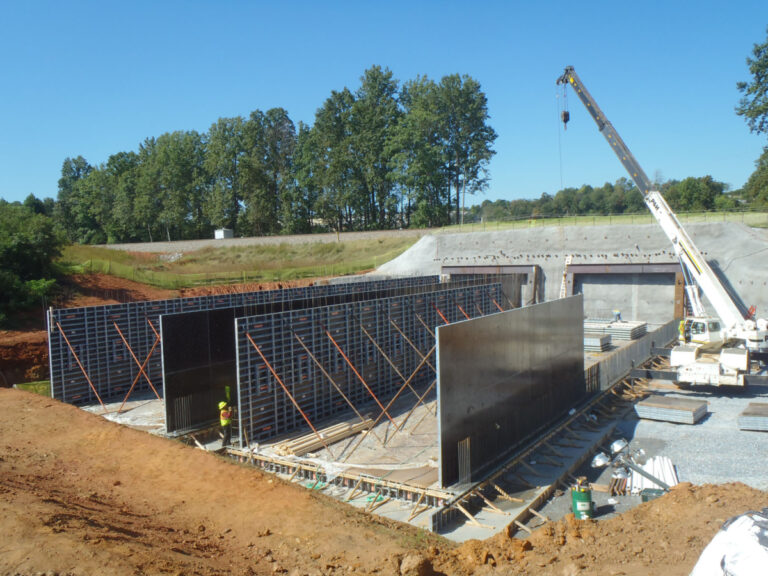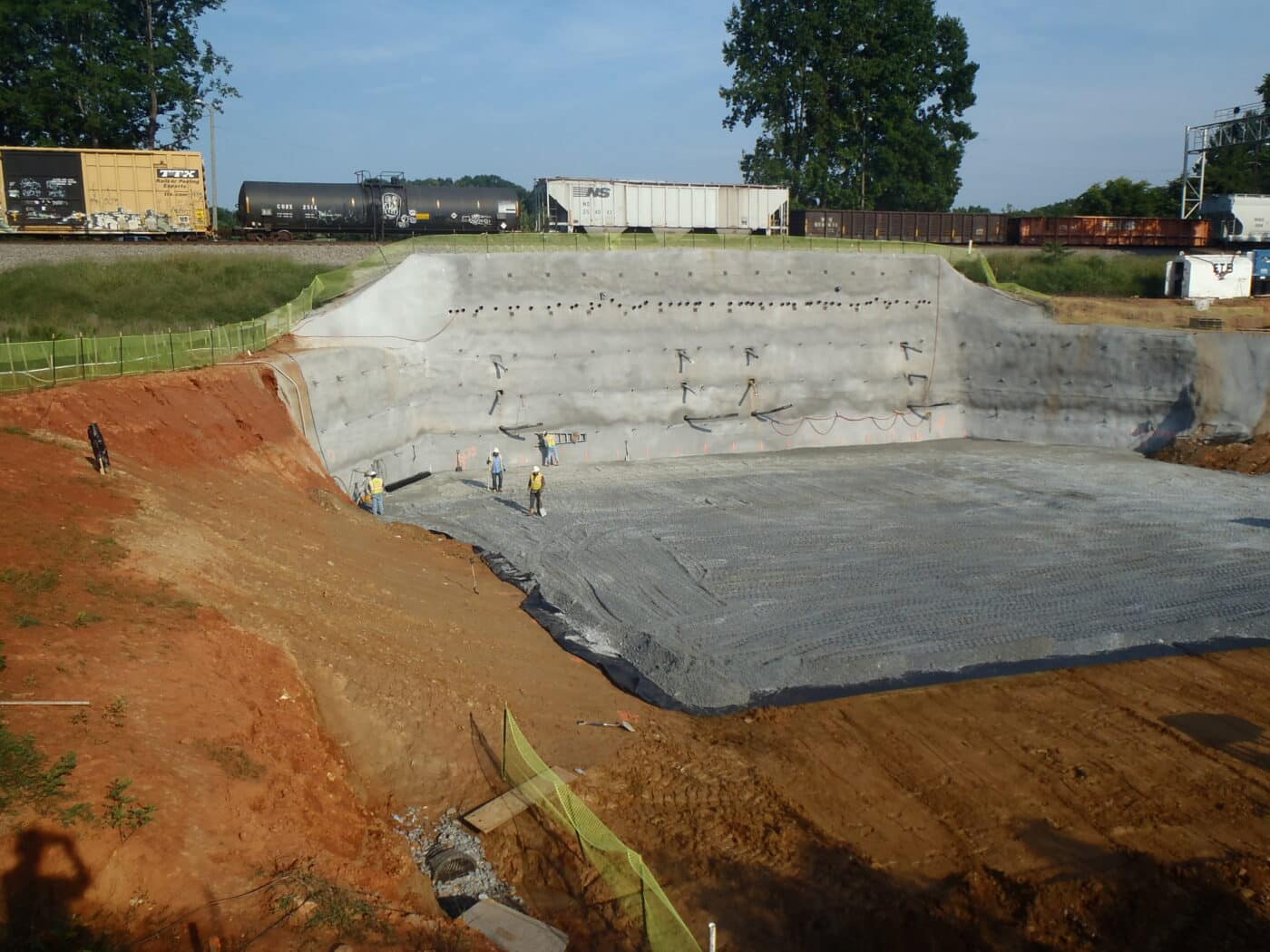Design Features
- Customizable design
- Ability to integrate in-wall utility conduits
- Customizable ground control and ground modifications
- Combines tunneling and trenchless methods
- Minimal impact to surface traffic and infrastructure
- Suitable for shallow cover and high traffic conditions
- Compatible with varying ground types
- Single Pass Tunneling Method
Post-tensioning has been used in bridge and building construction in the U.S. for more than 7 decades, with great success. For more than a decade, Brierley Associates has been adapting post-tensioning tools and methods to tunnel under critical transportation infrastructure with minimal disruption to the roadway or railroad above.
Liberty University resides on a 7,000-acre campus in Lynchburg, VA. The Norfolk-Southern railroad runs through and adjacent to the campus, hindering direct access between the campus and the commercial, educational, and residential amenities to the west. Entrance to the campus was through a well-travelled but dangerous at-grade crossing. With more than 30 trains each day travelling along three sets of tracks, safe crossing was problematic for cars and pedestrians. Both the University and Norfolk-Southern recognized the need for a new safe crossing near a busy rail yard.
Working with contractor Southland Holdings along with TSG Engineering and Elwyn and Palmer Consulting Engineers, Brierley developed a technique employing a reaction wall and post-tensioning methods to pull, not push, two 2-lane box tunnels under the railroad. The project team designed and installed two 2,100 ton by 20.5‑ft high by 32-ft wide and 130-ft long cast on-site reinforced concrete box tunnels. Although conventional construction of these types of tunnels requires a robust, heavily reinforced reaction block or base slab and hydraulic jacks to push the box tunnel into place, Brierley’s unique adaptation eliminated the robust structural slab and pushing apparatus.

The new approach pulls the boxes through the railroad embankment via post-tensioning tendons installed through the embankment and walls of the tunnels. Six 765-ton capacity jacks were mounted on 4‑ft thick reinforced concrete blocks, cast against a 23-ft high soldier pile reaction wall located at the receiving side of the embankment. The reaction wall alleviated the railroad’s concerns about the embankment blowing out during advancement of the box tunnels and post-tensioning gave the contractor team more control over the direction and grade of the cast-in-place box tunnel.
Southland used six DSI post-tensioning jacks, with a capacity of 765 tons each, to pull the steel tendons through the casings installed by HDD. Once the boxes were constructed and all other preparations were in place, it took Southland 14 days, working around the clock, to pull the first box into place. Crews used two mini excavators at the face in conjunction with a conveyor belt to remove muck from the tunnel as it was advanced into place. The boxes were pulled to within 30 ft of the face, leaving sufficient soil to develop the passive resistance required to counteract pulling forces.
Learning from their experience on the first tunnel, the crews made some adjustments, placing the jacks at the rear of the second box tunnel to reduce buckling of the HDPE tendon casings, and completed the second installation in just under 84 hours.
Adaptable Technique has Numerous Applications
In Rotterdam Junction, New York, a pedestrian tunnel was needed under three active railroad lines to complete the Empire State Trail, which traverses New York State from east to west, and to provide stormwater relief during major flood events. To construct the tunnel, six sets of steel tendons were installed through the embankment and connected to hydraulic jacks affixed to the end of the box. On the other side of the embankment, the steel tendons were connected to a rectangular, steel-sheeted and braced cellular cofferdam. Also constructed was a soil nail headwall through which the box entered the embankment, a tunnel spile canopy under which the box traveled during the jacking operation, and a lubrication system to reduce friction between the tunnel walls and the embankment soil.
The box was pulled through the embankment over the course of seven days. Working around the clock, box advancement was mostly continuous. Vertical deformation of the rail embankment was limited to about 2-in during the box drive. Following the box drive, vertical deformation of the embankment was negligible.
This technique has also been replicated in Augusta, Georgia, creating a 16-ft wide by 26-ft high by 120-ft long box tunnel under a busy four-lane arterial. To address shallow cover over the box tunnel, horizontal steel pipe spiling was installed to create a canopy above the box tunnel during jacking operations to mitigate risk. Approaches to the underpass were supported using soil nail walls, which allowed for top-down construction of the temporary support of excavation system.
Innovation doesn’t always entail reinventing the wheel. In these cases, applying existing technologies to old problems resulted in new tunnel construction methods, and in all cases, tunneling was accomplished with minimal movement of the infrastructure above and no disruption to rail or motor vehicle traffic.
